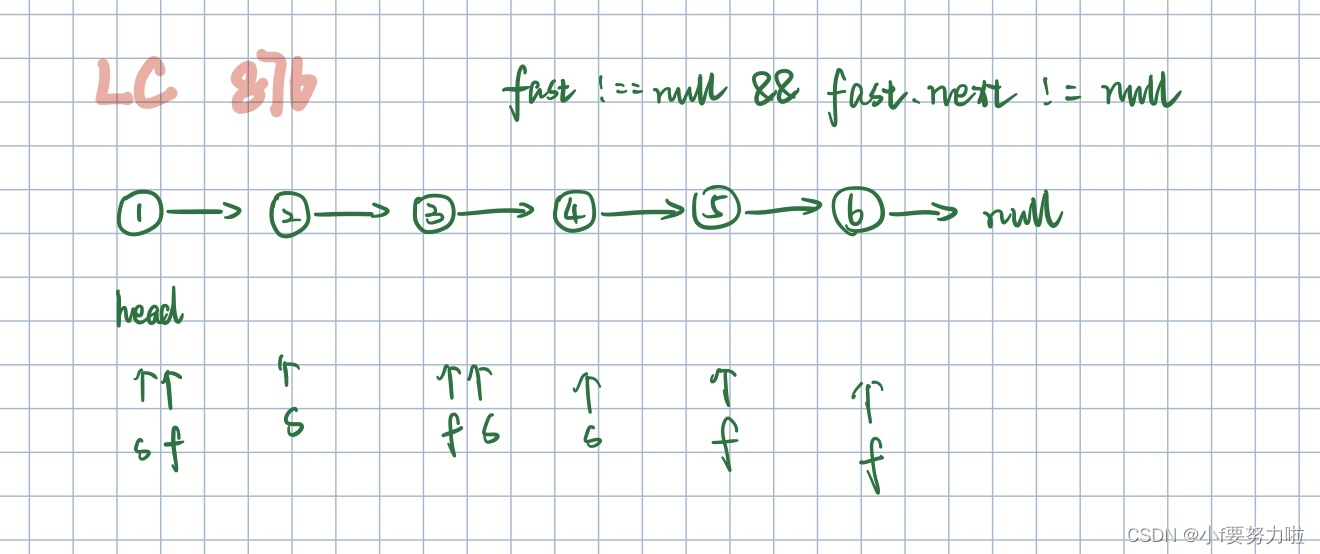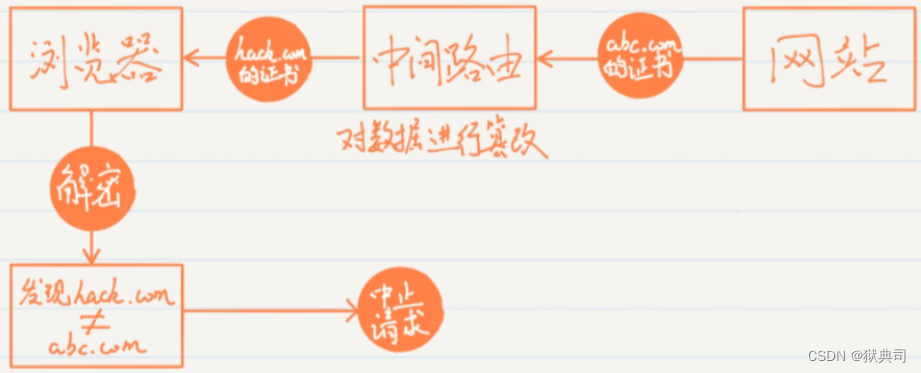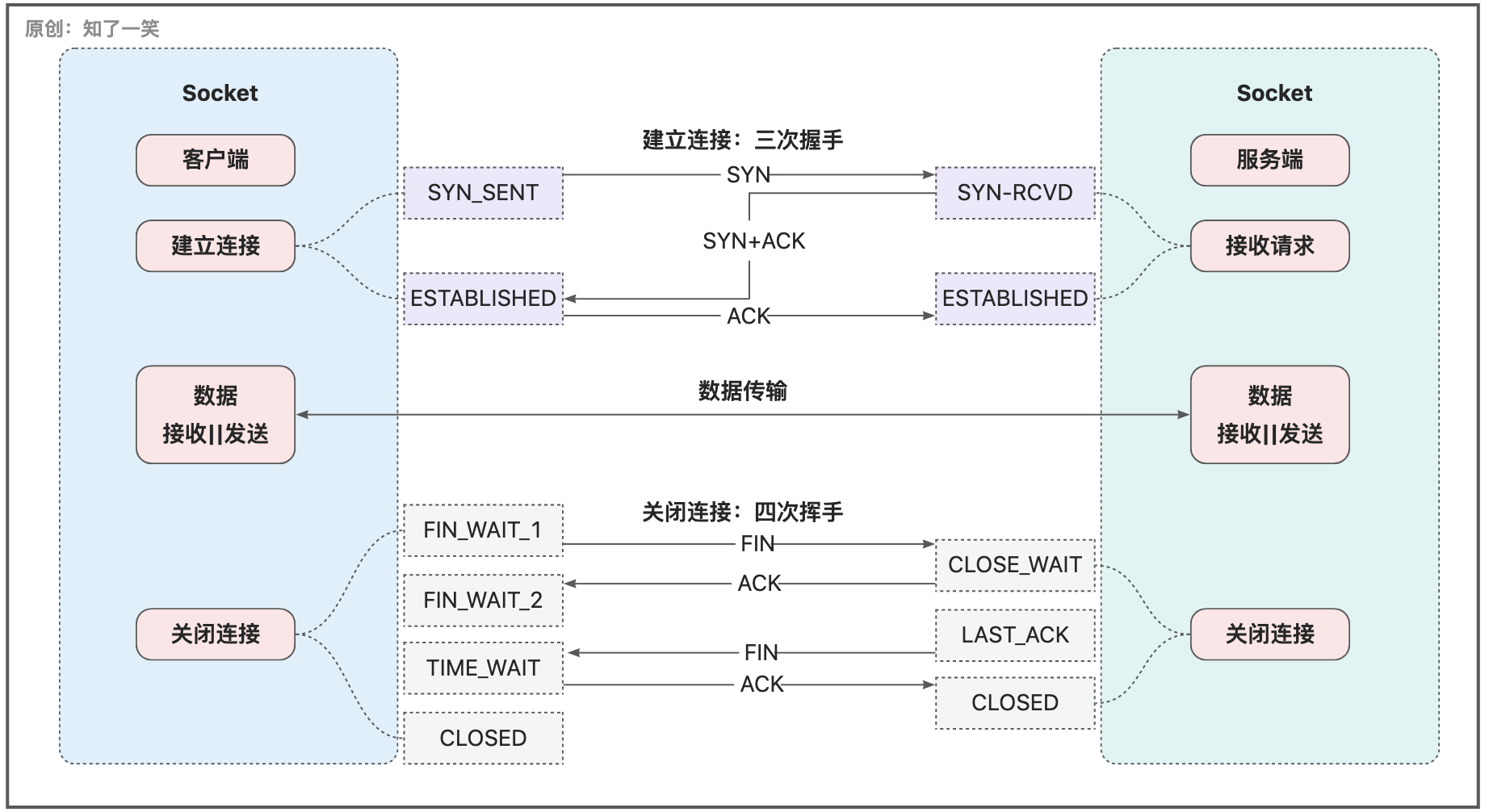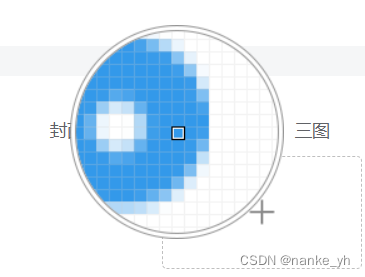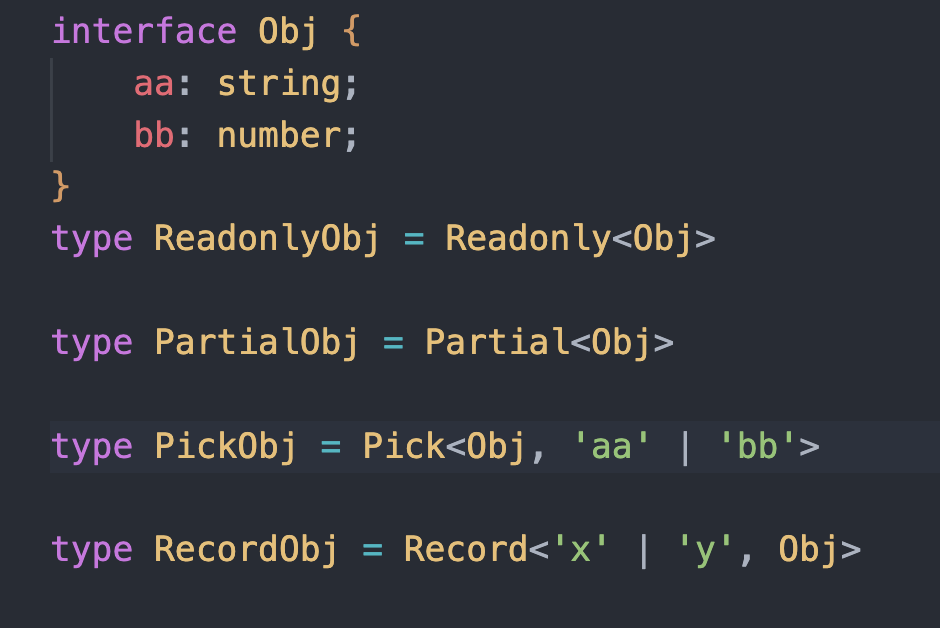_4LeetCode代码随想录算法训练营第四天-C++
-
- 两两交换链表中的节点
-
19.删除链表的倒数第N个节点
-
面试题 02.07. 链表相交
-
142.环形链表II
24.两两交换链表中的节点
整体思路
不是简单地交换值,而是交换指针地指向。
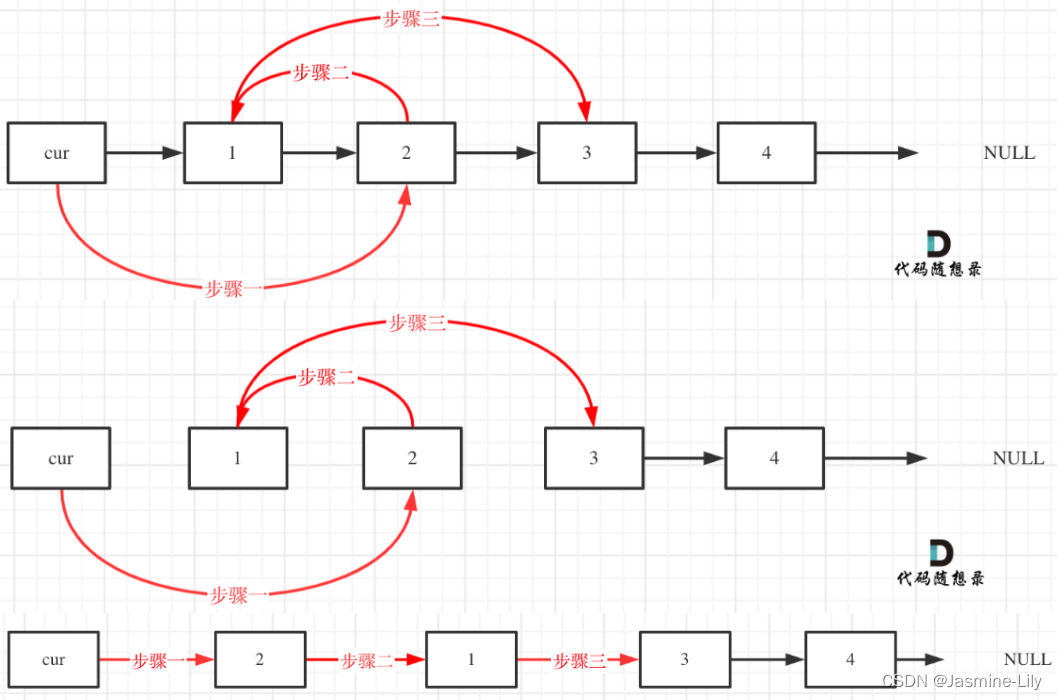
终止条件为:
cur->next != nullptr && cur->next->next != nullptr
两者不能交换位置,因为交换位置可能会导致访问了空指针
代码
/*
* @lc app=leetcode.cn id=24 lang=cpp
*
* [24] 两两交换链表中的节点
*/
// @lc code=start
/**
* Definition for singly-linked list.
* struct ListNode {
* int val;
* ListNode *next;
* ListNode() : val(0), next(nullptr) {}
* ListNode(int x) : val(x), next(nullptr) {}
* ListNode(int x, ListNode *next) : val(x), next(next) {}
* };
*/
class Solution {
public:
ListNode* swapPairs(ListNode* head) {
ListNode* preHead = new ListNode(0,head);//定义一个虚拟头节点,方便操作
ListNode* cur = preHead;//交换两节点之前,cur指向两节点之前的一个位置
ListNode* temp;//临时节点
ListNode* temp1;//临时节点1
//具体的交换方式为代码随想录上面画的图
while(cur->next != nullptr && cur->next->next != nullptr)
{
temp = cur->next;
temp1 = cur->next->next->next;
cur->next = cur->next->next;
cur->next->next = temp;
temp->next = temp1;
cur = cur->next->next;//Emmm,这里写的时候忘记了,就死循环了哈哈哈
}
return preHead->next;
}
};
// @lc code=end
19.删除链表的倒数第N个节点
整体思路
1.定义快指针和慢指针,初始值都为虚拟头节点。

2.将快指针移动 n+1 步,为什么是n+1呢,因为只有这样同时移动的时候slow才能指向删除节点的上一个节点(方便做删除操作)

3.fast和slow同时移动,直到fast指向nullptr;此时慢指针指向需要删除元素的前一个元素。

4.删除慢指针指向的下一个节点。

代码
/*
* @lc app=leetcode.cn id=19 lang=cpp
*
* [19] 删除链表的倒数第 N 个结点
*/
// @lc code=start
/**
* Definition for singly-linked list.
* struct ListNode {
* int val;
* ListNode *next;
* ListNode() : val(0), next(nullptr) {}
* ListNode(int x) : val(x), next(nullptr) {}
* ListNode(int x, ListNode *next) : val(x), next(next) {}
* };
*/
class Solution {
public:
ListNode* removeNthFromEnd(ListNode* head, int n) {
//根据题目要求,不用担心n的值超出范围
ListNode* preHead = new ListNode(0,head);//创建一个虚拟头节点
ListNode* fast = preHead;//创建一个快指针
ListNode* slow = preHead;//创建一个慢指针
n++;
while(n-- && fast != nullptr)
fast = fast->next;
while(fast != nullptr)
{
fast = fast->next;
slow = slow->next;
}
ListNode* temp = slow->next;//存储要删除元素的位置
slow->next = slow->next->next;//删除元素
delete temp;//清理内存
return preHead->next;
}
};
// @lc code=end
160.链表相交-面试题
整体思路
1.curA指向链表A的头结点,curB指向链表B的头结点。
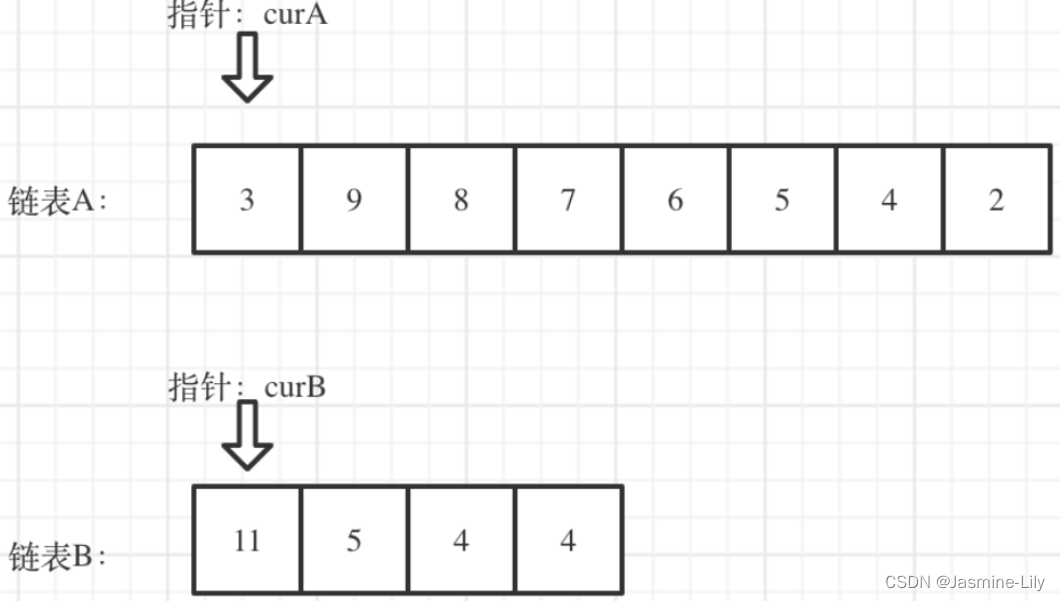
2.求出两个链表的长度,并求出两个链表长度的差值;让curA移动到,和curB 尾巴对齐的位置。
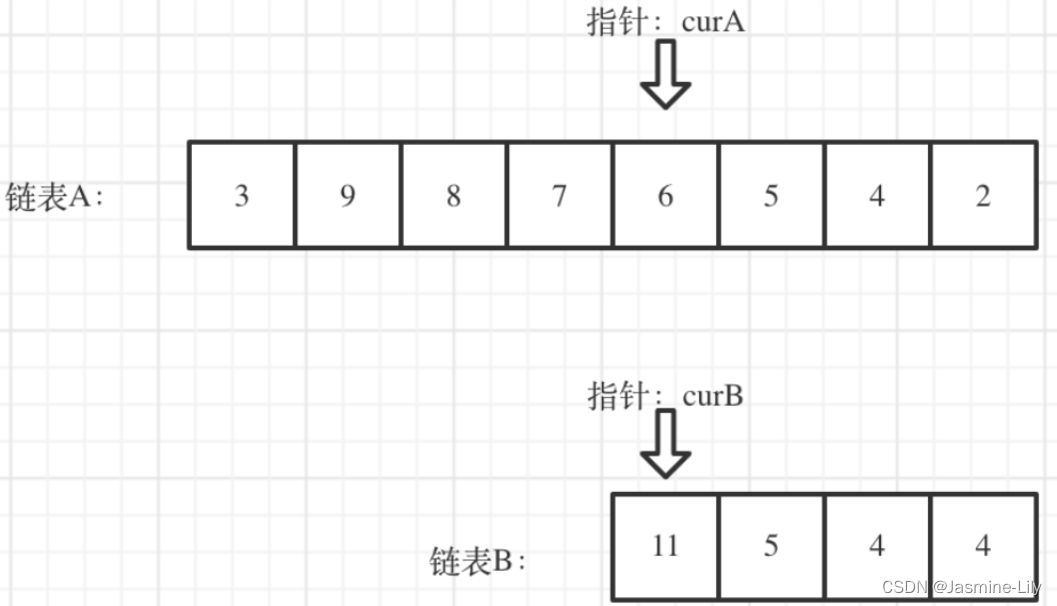
3.比较curA和curB是否相同,如果不相同,同时向后移动curA和curB,如果遇到curA == curB,则找到交点。否则循环退出返回空指针。
代码
/*
* @lc app=leetcode.cn id=160 lang=cpp
*
* [160] 相交链表
*/
// @lc code=start
/**
* Definition for singly-linked list.
* struct ListNode {
* int val;
* ListNode *next;
* ListNode(int x) : val(x), next(NULL) {}
* };
*/
class Solution {
public:
ListNode *getIntersectionNode(ListNode *headA, ListNode *headB) {
ListNode* curA = headA;//链表A的索引指针
ListNode* curB = headB;//链表B的索引指针
int lenA = 0;
int lenB = 0;
//先求得链表A的长度
while(curA != nullptr)
{
lenA++;
curA = curA->next;
}
//先求得链表B的长度
while(curB != nullptr)
{
lenB++;
curB = curB->next;
}
curA = headA;//重新为curA赋值
curB = headB;//重新为curB赋值
//让A指向长度较长链表的链表
if(lenA < lenB)
{
swap(lenA, lenB);
swap(curA, curB);
}
//求长度差
int n = lenA - lenB;
//链表A和链表B尾巴上对齐
while(n--)
curA = curA->next;
//链表A和链表B尾巴上的元素一个一个对应,如果指针相等就返回位置,如果不等就更新curA和curB
while(curA != nullptr)
{
if(curA == curB)
{
return curA;
}
curA = curA->next;
curB = curB->next;
}
//没有找到指针相等,就返回nullptr
return nullptr;
}
};
// @lc code=end
142.环形链表II
判断链表是否环
快指针和慢指针:快指针走得比较快,在环里面转圈圈;慢指针走得比较慢,与快指针在环中相遇了。
为什么一定会相遇?
快指针每次走两个节点,慢指针每次走一个节点;如果有环的话,快指针和慢指针一定会相遇,相当于是快指针去追慢指针(快指针一个一个节点去靠近慢指针。)。(但是如果快指针每次走三个节点,慢指针每次走一个节点的话,就有可能会错过,快指针跳过慢指针。)
找到环的入口

当发现链表中有环之后,如上图所示,slow指针走过的距离为x+y,fast指针走过的距离为:x+y+n(y+z),其中n为快指针在环中转的圈数。由于快指针速度为慢指针的两倍,因此可列式子:
2
(
x
+
y
)
=
x
+
y
+
n
(
y
+
z
)
=
=
>
x
+
y
=
n
(
y
+
z
)
=
=
>
x
=
n
(
y
+
z
)
−
y
=
=
>
x
=
(
n
−
1
)
(
y
+
z
)
+
z
2(x+y) = x+y+n(y+z) \\==> x+y = n(y+z) \\==> x = n(y+z) - y \\==> x = (n-1)(y+z) + z
2(x+y)=x+y+n(y+z)==>x+y=n(y+z)==>x=n(y+z)−y==>x=(n−1)(y+z)+z
由此可见,不管n为多少,不管快指针转多少圈追上慢指针,x一定等于z。
代码
/*
* @lc app=leetcode.cn id=142 lang=cpp
*
* [142] 环形链表 II
*/
// @lc code=start
/**
* Definition for singly-linked list.
* struct ListNode {
* int val;
* ListNode *next;
* ListNode(int x) : val(x), next(NULL) {}
* };
*/
class Solution {
public:
ListNode *detectCycle(ListNode *head) {
ListNode* fast = head;
ListNode* slow = head;
ListNode* index1, index2;
while(fast != nullptr && fast->next != nullptr)//由于fast每次走两个节点,因此要检查它指向的下一个节点是否为nullptr
{
fast = fast->next->next;//快指针两个两个节点跑
slow = slow->next;//慢指针一个一个节点跑
if(fast == slow)//当快指针追上慢指针的时候,说明存在环
{
//此时就开始寻找环的入口
ListNode* index1 = fast;
ListNode* index2 = head;
while(index1 != index2)
{
index1 = index1->next;
index2 = index2->next;
}
return index1;
}
}
return nullptr;
}
};
// @lc code=end






